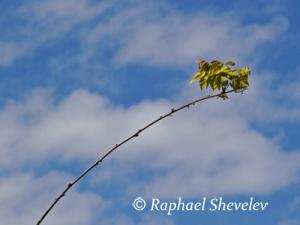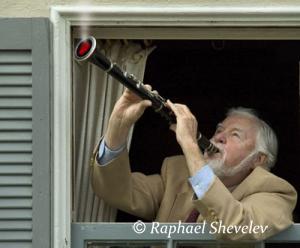Aloneness, solitude, is frequently a choice, even a necessity. Loneliness, however, implies a yearning for connection. Both are conditions familiar to artists, and sometimes flow into each other. The literature, including poetry, on aloneness and loneliness, is more than ample. Some of it is encouraging, some empathetic, some contradictory, some reconciliatory and some so distressing as to itself cause the depression from which it may well have arisen.
Art is almost never done by committee. It often takes what painter, filmmaker, director, author Rebecca Miller - and many others - call the dark and lonely grind. At the same time we also know that artistic innovation does not happen in is own bubble, but comes from all of life’s formations: family, education, acculturation and experiences, especially social contact. It’s the expressive product of the sum of the good and the painful.
Johann Wolfgang von Goethe wrote, “Talents are best nurtured in solitude. Character is best formed in the stormy billows of the world.” Writing specifically from a woman’s point of view, Barbara de Angelis said, “Women need real moments of solitude and self-reflection to balance out how much of ourselves we give away.” Aldous Huxley, aware of the conflict between solitude and fellowship claimed “The more powerful and original a mind, the more it will incline to regions of solitude.” These are mirrors of words written or spoken by Thoreau and Einstein.
So here I am, at this very moment of writing, having to guard my solitude against the swell of gregariousness which has characterized so much of my life. When working on my images, the distinction used to be even more pronounced than now, for I once labored sealed in the gloomy loneliness of a chemical darkroom. Now that I work digitally in a room filled with light, music and the distant sound-connections of a city, the need for solitude seems just as vital.
Then, when the work is done, the expanding umbilical connection with humanity becomes as important as the solitude of creation. Now is the time to show the work, to open it, to expose it and oneself to the “stormy billows,” and try to achieve the character that Goethe wrote about. As we need the private, so also do we need the public.

I’ve tried to characterize my condition with an image of a tiny clump of foliage exposed in space, subject to the winds and weather of my own mind, but retaining a slender connection to the society of which I am a part and from which I draw nourishment. It is titled Autobiography. I am a single artist, creating alone, but needing peers with whom to exchange ideas, and a chorus with whom to sing my picture-songs.
All my adult life, I’ve enjoyed attending galleries or concerts partly to overhear the opinions of others. Once in a while, when my own art is exhibited in a public place, I conspire to visit the gallery anonymously and do the same. I don’t believe that artists are the final arbiters of their own art. We all have limited vision, limited comprehension, and so the expressed thoughts of others are a great source of learning. Sometimes they are also a great source of surprise. There are delightful occasions when I learn how much smarter I am than I’d thought. Yes, of course I must have known that my photographs have a clearly direct connection with the mythology of the Mahabharata!
Twenty years ago, when I was elected a Fellow of the Royal Photographic Society of Great Britain, I had been under some pressure to get my portfolio to their Bath headquarters in time for the judging. As my darkroom was being renovated, I used one in a friend’s home. I ran out of the gelatin silver print paper I’d chosen, so my host offered me her own. As a result, about a third of the work was printed on paper with a different texture than the rest. A kind friend recorded jurors’ comments and sent me the tape. One of them remarked about the unusual brilliance of choosing different paper textures to emphasize the peculiarities of specific images. It was a much more satisfying explanation than I could have invented. I took that as an institutional confirmation of my unconscious genius. (hic ridete)

The invention of the compact disk and its ability to be electronically encoded made it possible for my friend and neighbor, clarinetist Bill Larson, to found a company in 1986 called To Make Music. It had much the same purpose as Music Minus One, a successful enterprise founded in 1950, very shortly after the invention of the 33 rpm vinyl LP. This new technology extended the playing time on each side from about five minutes to over twenty minutes. The CD extends this period for far longer, so it is possible for a private soloist to perform quite large works with recorded accompaniment without unwanted technical interruption. Bill has long since retired, but if he desires an appreciative human audience, all he has to do is assemble his hot clarinet, poke it out the window and play his heart out. This is a very music-friendly neighborhood.
So where do we graphic artists go for our Art Minus One, for our vital connection between solitude and society? We know that in order to create we require solitude, but we also require society and our peers in order to have a life filled with the psychic benefits of being social animals. These conditions are complementary. Remove either and the other is damaged.
In his book Flow: The Psychology Of Optimal Experience (1990), psychologist Mihaly Csikszentmihalyi writes:
"To fill time with activities that require concentration, that increase skills, that lead to a development of the self, is not the same as killing time by watching television…A person who rarely gets bored, who does not constantly need a favorable external environment to enjoy the moment, has passed the test for having achieved a creative life."
We are the sole, singular creators of our art. To pursue our ambitions we depend on the belief that what we create has a necessary role in the aggregation of what we call civilization.
There are, of course, the usual avenues for enlivening that slender branch between our creativity and the source and target of our life in society. These include formal and informal exhibition and publication. Here too we have our wonderful new technologies to make this possible. Like our fellow performing artists, we now have websites and the internet. Our images are seen and responded to in distant places. We are part of the symphony and antiphony of the world.
Just two weeks before I wrote this, Queen Beatrix of the Netherlands opened the long-awaited renewed and glorious Rijksmuseum in Amsterdam. There is a photograph of her standing before Rembrandt’s Night Watch in the Hall of Honor. Peter Schjeldahl, in The New Yorker of April 22, 2013, writes that, as he viewed the painting, “I had a moment of fancying the almost hundred-and-eighty-five-square-foot canvas as a raft for the self-respect of Western civilization. One of us did that!”
A healthy creative life requires us to be both soloists and members of the chorus.
__________
Raphael Shevelev is a California based fine art photographer, digital artist and writer on photography and the creative process. He is known for the wide and experimental range of his art, and an aesthetic that emphasizes strong design, metaphor and story. His photographic images can be seen and purchased at www.raphaelshevelev.com/galleries.



Comments
Life is about balance and
Life is about balance and your clump of foliage balancing on the branch represents that to me.
I've come to enjoy your
I've come to enjoy your writing as much as your photos. Thanks for this wonderful piece about the tension between solitude and community. We need both!
Grandpa, you'd get a lot more
Grandpa, you'd get a lot more done if you could type with all your fingers.
I agree. We artists do need
I agree. We artists do need solitude to tune into our deeper inner world and then express or display it. It can be lonely as one enters, but once in, there is no loneliness, just energy bursting and struggles for clarity. You have expressed all elegantly as usual. To be part of the world, observing all and then digesting it and being moved by it is very motivating, challenging and exciting. Thanks for putting yourself out there and making others think.